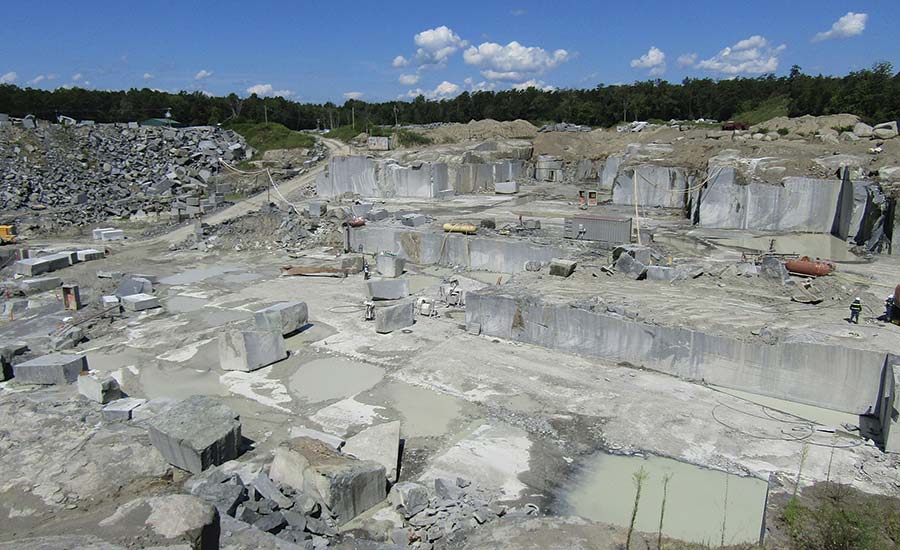Travelling Through Granite Quarries in South Africa: A Visual Odyssey
Travelling Through Granite Quarries in South Africa: A Visual Odyssey
Blog Article
Unearthing the Rich Background and Lasting Practices of Granite Quarrying
As we stand on the precipice of revealing the detailed tapestry of granite quarrying, a trip via time exposes not just the physical act of drawing out rock yet also the cultural and historical value woven right into the extremely fabric of this technique. From the ancient origins that laid the foundation for contemporary quarrying strategies to the sustainable techniques that are forming the future of this sector, each sculpt mark on granite surface areas narrates waiting to be discovered (granite quarries in south africa). The legacy of granite quarrying extends much beyond mere extraction; it is a testament to human ingenuity, resilience, and the long-lasting appeal of this majestic rock
Ancient Origins of Granite Quarrying
Going back to old human beings, the method of quarrying granite has been an important component of human history and building improvement. The earliest proof of granite quarrying go back to old Egypt, where substantial pyramids and elaborate sculptures were crafted from this resilient rock. The Egyptians made use of primitive tools to draw out granite blocks from quarries, showcasing the significance of this material in their monumental constructions.
Moving on in background, the Greeks also made significant payments to the quarrying of granite. The Greeks used granite in numerous architectural wonders, such as temples and statues, demonstrating their ability in shaping and sculpting this hardy rock. The Romans additionally fine-tuned the techniques of quarrying granite, employing sophisticated devices like blades and hammers to remove and shape granite for their iconic structures.
Through the centuries, the technique of quarrying granite has advanced, with modern-day innovations enhancing effectiveness while preserving the classic charm of this all-natural rock - granite quarries in south africa. From ancient people to contemporary home builders, the legacy of granite quarrying proceeds to form our globe
Evolution of Quarrying Methods
The evolution of quarrying methods has actually been marked by a continuous progression in the direction of greater efficiency and precision in removing granite. From the simple methods utilized by our forefathers to the innovative modern technologies made use of in modern quarrying procedures, the industry has actually undergone significant developments. Early quarrying strategies entailed manual labor with fundamental devices such as chisels, hammers, and wedges to extract granite blocks from the planet. As worlds proceeded, techniques like fire-setting and primitive nitroglycerins were introduced to assist in the extraction process.
In more current times, the development of equipment reinvented the quarrying sector, allowing faster removal prices and boosted productivity. Technologies such as diamond wire saws, high-pressure water jets, and pneumatically-driven drills have actually come to be common in modern-day quarries, enabling for accurate cutting and decreased waste. Furthermore, improvements in computer-controlled tools and 3D look here modeling have enhanced quarrying procedures, leading to minimal environmental impact and enhanced sustainability practices. As the demand for granite remains to increase, the evolution additional resources of quarrying strategies remains indispensable to meeting sector needs efficiently and sustainably.
Social Relevance of Granite
Granite holds a profound social significance throughout different civilizations as a result of its enduring presence in building work of arts and respected monoliths. From the magnificent pyramids of Egypt to the intricate carvings of the Angkor Wat holy place in Cambodia, granite has actually been a material of selection for sharing magnificence and longevity in social heritage. In ancient Rome, granite columns adorned temples and public buildings, representing strength and permanence. The cultural relevance of granite extends past its physical characteristics; it personifies resilience, security, and eternity, making it a sign of withstanding heritages and practices.

Sustainable Practices in Quarrying
Among the rich history of granite quarrying and its cultural relevance lies a growing emphasis on lasting practices within the market. As environmental awareness and issues regarding resource deficiency have actually enhanced worldwide, the quarrying market has significantly accepted lasting approaches to decrease its influence on the environment and bordering communities.

Furthermore, improvement and recovery of quarry websites post-extraction are important to sustainable techniques. By restoring quarried locations to a natural or advantageous state, such as creating wild animals environments or leisure areas, quarriers can offset the ecological footprint of their procedures and add positively to the local community.
Tradition of Granite Quarrying
With a historical background steeped in craftsmanship and commercial progression, you can check here what enduring influence has granite quarrying left on the landscape of modern culture? The tradition of granite quarrying goes beyond plain extraction practices; it has actually shaped building wonders, urban landscapes, and cultural heritage worldwide. The resilient nature of granite has actually made it a preferred choice for monuments, structures, and framework, standing as a testament to the ability and virtuosity of quarry employees throughout generations.
In addition, the financial footprint of granite quarrying can not be forgotten. The market remains to supply job opportunity and drive regional economic climates in regions where granite removal prevails. It has actually also stimulated technological innovations in quarrying strategies and equipment, causing more reliable and sustainable practices.
In regards to sustainability, the heritage of granite quarrying consists of initiatives to alleviate ecological influences through reclamation projects and responsible resource administration. By stabilizing economic passions with environmental stewardship, the market strives to guarantee that future generations can remain to profit from this long-lasting all-natural source.
Verdict

Report this page